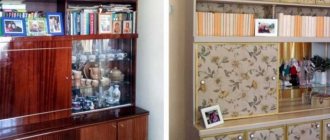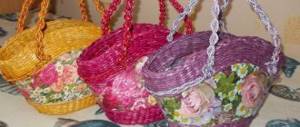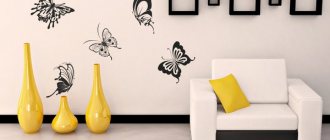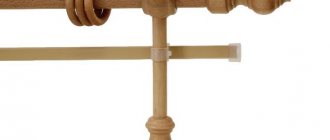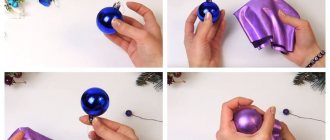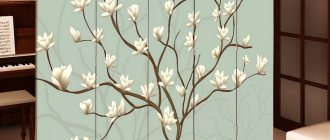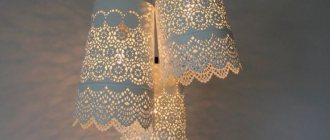Every woman is a craftswoman at heart, striving to create comfort and beauty in the family nest with her own hands. A good way to refresh the interior and give it originality is to make sofa cushions with your own hands, which will not only serve as decoration, but also make your stay in the living room more comfortable. Or maybe they will even become the subject of fun pillow fights? In any case, creating a sofa cushion will not take much effort from you, but it will give you joy from the final result and admiration that your household and guests will reward you with. In this article, you will learn the best ways to make decorative pillows for your sofa with your own hands, and see creatively inspiring photos.
Purpose
A sofa cushion not only has practical functions, but is also part of the decor. There are a number of reasons why you should not neglect the presence of this attribute:
For interior
- Properly selected colors of pillows, their shape and size, can harmoniously fit into the interior, emphasizing the style and design of the room;
- The originality of accessories with unusual shapes or prints, with hand embroidery or with velor inserts, will emphasize the taste of the owner of the house and reflect the individuality of character.
- This attribute allows you to create an unusual and warm atmosphere of comfort in your home;
- A decorative object in the form of a soft pillow toy or animal can hide some imperfections in the interior, drawing all the attention to itself.
Dumki
Additional information! There are practically no downsides to using this paraphernalia if it is chosen tastefully and matches the color scheme of the surrounding interior.
We sew pillowcases for sofa cushions with our own hands
The last part of the photos in this article will clearly show you how you can sew pillows on a sofa. Make sure that if you have a sewing machine, a lot of imagination or a ready-made pattern, you can also create stunning decorative sofa pillows that cannot be found in a regular store. This method is also suitable for those who do not want to spend money on new pillows, but only want to replace old pillowcases or disguise a stain. Look at the photo!
Also read: Modern interior items - 6 trends for home decor Also read: Cozy autumn interior - the best decor and design ideas Finally, useful patterns for sewing beautiful pillowcases for sofa cushions:
We hope that our article gave you at least a little inspiration for creativity. Create something beautiful with your own hands, it’s very interesting and exciting!
Types of pillows
There are an unlimited number of types of pillows, different shapes, sizes and purposes. Duma can look not only like a classic pillow, but also like a fairy-tale character, a car or an animal. Several main types used in decoration:
- A cushion is a small pillow, the second name of which is dumka, often used not only as an accessory, but also as a soft cushion under the head during daytime sleep.
- Sectional - consists of several volumetric inserts sewn together with ribbed inserts, in appearance it resembles sewing in a patchwork style.
- Turkish - often decorated with currency exchangers and tassels, the shape is slightly oblong, the embroidery on the fabric is reminiscent of oriental patterns.
- Quilted - comes in various shapes: rectangular, oval, round or square. A distinctive feature of this pillow is the quilted surface of the cover.
- Oxford - features additional stitching around the perimeter, which separates the border without padding. The piping accompanies the pillow around the entire perimeter.
You may be interested in Ready-made patterns and sewing procedures for dog harnesses with your own hands
Oxford pillow
Sew a pillow with a zipper
Depending on the purpose, you can also sew a pillowcase with a zipper. For example, the dimensions of the pillow will be slightly smaller: 40 by 40 cm. Let's take cotton for the fabric. On the one hand, a cut with a beautiful pattern is more expensive, on the other hand, cheaper cotton without a pattern. We cut out the main part 41 and a half cm by 55 cm. The part for the zipper is 3.5 cm by 41 and a half cm and two small pieces of 3.5 by 4 cm for the corners of the zipper. And also a piece of plain fabric 41 and a half cm by 13 and a half. It is also necessary to prepare a plastic zipper 40 cm long and threads, scissors, and pins. You need to take two small pieces of cotton, place the front side to the zipper, pin, iron and stitch, leaving 38 cm between the seams. All parts of the pillow need to be ironed and stitched. Then we combine the front sides of the zipper inward and one of the edges, equal to 41.5 cm, needs to be stitched. The seam allowance should be ironed on one side and topstitched. You need to repeat the whole process on the other side. It is necessary to turn the pillowcase inside out and stitch the side seams, making sure that the zipper is open. Turn the pillowcase inside out and iron it.
Preparing to sew
Since soft decorative objects are often moved from place to place, dropped, and children play with them. Therefore, to create them you need to choose durable fabric, safe padding with an elastic texture that does not change its shape under physical influence. Sewing beautiful sofa cushions consists of several stages: choosing the material, selecting the appropriate padding and sewing itself.
Choosing fabric
Choosing fabric for thinking is the very first and most important stage. The main quality of the selected material should be strength. If you still have no idea how to sew a pillow for a sofa with your own hands, then it is best to choose simple fabrics: cotton or chintz. Also commonly used fabrics: felt, silk, linen, upholstery material or calico. For knitted pillows, it is best to use old knitted sweaters or unnecessary bulky jumpers. An important factor in the material used should be color fastness and texture density so that the padding material does not fall out.
Pros and cons of different types of fabrics
Natural fabrics:
- Calico fabric is easy to care for, has a light and breathable texture. Cons: sensitive to high temperatures, can shrink, easily wrinkled and short-lived material.
- Silk is distinguished by its strength and wear resistance, can be washed at a fairly high temperature (about 110 degrees), and is a highly breathable material. Cons: wrinkles easily, the price is quite high.
- Linen fabric is hypoallergenic, breathable, and washable. Cons: shrinks quickly and wrinkles very easily, the material itself is harsh.
For the interior:
Jeans, flannel and felt are fabrics of denser origin, which have their own characteristics:
- Jeans or denim is a breathable and quite durable fabric, the colors look very stylish and fashionable, and are environmentally friendly. Cons: highly susceptible to fading, hardens and shrinks after washing.
- Fleece is a budget fabric, pleasant to the touch and practical to use, hypoallergenic. Disadvantages: during sewing it frays a lot, which causes certain difficulties, and the fabric is absolutely not elastic.
- Felt - there are no back and front sides, which simplifies its use, a large range of colors, containing 90-100% wool. Cons: pills may appear after washing, it is afraid of high heating temperatures, both during washing and during steam treatment, and if washed incorrectly, it loses its shape.
You may be interested in: Making your own wedding veil for the bride
Additional Information! When sewing decorative pillows, a combination of fabrics is allowed; one side can be linen and the other silk. It looks unusual and beautiful. You can also create your own patterns from many scraps of different fabrics. This type of needlework is called patchwork.
Curtain to match the style of pillows
Filler selection
Just sewing a pillowcase is only a small part of the work done; it still needs to be stuffed. There are two types of padding:
- Natural filler (plant or animal origin).
- Artificial filler.
The advantages of natural fillers, in this case of animal origin, are their long service life, practically no caking, and maintain good sanitary and hygienic properties. The only thing is that such material is rarely used when sewing decorative pillows, since they are not fluffed like sleeping pillows. Such fillers include feathers and down.
Fillers of plant origin are often used for medicinal purposes or for people with certain types of allergies to down or synthetics. The filling can be: bamboo, medicinal herbs, buckwheat husks or hop cones. Cons: this material has the ability to rot, become damp and even rot, so it requires very careful care.
Original design
Artificial filler: holofiber and synthetic fluff. These are the most recommended materials that will not lose their elasticity over the years. Cotton wool, padding polyester, etc., these materials are absolutely not suitable for stuffing decorative pillows, as they tend to quickly clump and cake.
For pillows in a children's room, it is best to use silicone granules; also, this type of material does not get wet and is hypoallergenic.
Important! Dummies with artificial filling can be easily washed in a washing machine, eliminating accumulated dust, which is not permissible with filling made from natural materials.
Necessary items for sewing:
- Scissors;
- Fabric and padding, zipper (for certain types of pillows);
- Sewing machine (can also be sewn by hand);
- Tailor's pins and needles;
- Meter or simple ruler, chalk;
- Threads, pattern on cardboard or instructions;
- Iron.
Step-by-step master class on sewing pillows
All materials are prepared, tools are collected, you can start sewing the pillow:
- We decide what size and shape the thought will be, let’s say a square, 50x50 cm.
- On the laid out fabric from the wrong side you need to draw two 50x50 squares, adding 2-3 cm around the perimeter for the seam.
- Folded squares with the front part facing inward should be pierced with pins along the perimeter so that the fabric does not move out and cut out.
You might be interested in this: Simple patterns of Tilda angels for sewing yourself
Furniture cushion
The next stage is stitching the prepared parts:
- You need to start sewing by stitching 3 sides of the cut pieces, without removing the pin so that the fabric does not slip. Retreating the same 2-3 cm that were left in reserve.
- Bend the resulting seams to one side and iron them thoroughly, then turn them right side out.
- Fill the resulting pillowcase with the selected filling and stitch the remaining side, bending the seam inward.
Large sofa cushion
Cushions for sofas of impressive size require good skill and acquired practice during sewing. The sewing algorithm is exactly the same as for standard products that were described earlier. It is enough to increase the dimensions of the finished pattern to the required parameters. Large sofa cushions can also be made under furniture, covered with upholstery furniture textiles.
We make knitted pillows for the sofa using knitting and crochet
If you know how to knit, then why not try making a sofa pillow by knitting or crocheting? Below we offer you 10 photos of beautiful knitted pillows that will look great in both modern and rustic interior styles.
Also read: Festive knitted crafts for the New Year
And if you do not have knitting skills or want to quickly decorate your sofa in the living room with decorative pillows, then you can use an old knitted sweater and sew pillows with your own hands, following the step-by-step instructions below.
Also read: Knitted crafts for the home - a selection of the best ideas
Patterns and diagrams
DIY toy pillow - Owl.
Owl
Materials: chalk, thread, fabric, scissors, lace, black buttons, black felt for beak and eyes, fabric and stuffing.
- All the required details from the drawn pattern are cut out on the fabric. Each element must be sewn at a distance of a few mm from the edge of the product.
Stage 1
Stage 2
- Afterwards the toy is stuffed with filler.
Stage 3
Stage 4
- The final stage is the production of decorating elements.
Stage 5
Pillows in the shape of cats are made by analogy.
cat
Cat 2
There is also a standard pattern for patterning a rectangular pillow.
Pattern of a rectangular pillow
Fabric for decorative pillows
The fabric for decorative pillows can be a wide variety of fabrics. It can be satin, wool, cotton, linen, burlap, felt. Pillows made from knitting threads look beautiful and cozy. It is beautiful to decorate pillows with special decorative lace, firanka lace. You can also sew pillows from eco-cotton, tapestry, Panama, decorative satin, plush, decor chenille, taffeta, knitted fabric, microfleece, velor, fleece, ducat, velvet, station wagon and other various fabrics. And also senevri, nubuck, armavir, ginza, fuji, gominol, merry, decorative kiri, jazy, suede suet, loneta, berta, sara, otono, cuerdo, jane, moon, blanco, big ben, nerea, patchwork, romi and others fabrics for decoration.
Decor options
To give the product even more individuality, you can add some decorative elements to it:
- A key element, for example, a simple button in the middle or pompoms along the edges can perfectly complement the overall picture of the created accessory.
- Relief design - puffs, fringe, flowers, bows.
- Photo printing or simple applique.
- Lace edging, embroidery, or a knitted pillowcase can give an elegant and expensive look.
Decor finishing with voluminous thread
The correct choice of fabric, padding and color scheme is the key to a good final result. Any novice seamstress can easily cope with the task provided that all the conditions specified in the diagrams are met. The remainder of the fabric pieces can be used for subsequent sewing of patchwork-style pieces. The garden interior can also be decorated with soft accessories, placing them on a hammock or swing; their appearance will create coziness and comfort in the space.
Schemes and drawings
Beautiful pillows will organically fit into the interior, provided they comply with the overall design of the room. By adhering to generally accepted rules, you can achieve better design results.
Optimal stylistic combinations:
- classic interiors, antique do not limit the wide choice of shapes and textures;
- country, Provence - bright colors with variegated patterns, rich tones of fabrics;
- ethnic style – national patterns, motifs;
- minimalism, modern style, hi-tech, art deco - plain material is most appropriate.
DIY decor should harmoniously continue the overall design idea of the room.
Pillows that repeat patterns, textures of bedspreads, furniture upholstery, curtains will harmoniously complement the decoration with frills and tassels in accordance with the finishing of the details. The base of the element can be made of ordinary, durable material without decoration.
You can sew the product using standard patterns and drawings. Traditionally, pillows are made in the form of rolls, squares, and rectangles. Non-standard solutions provide their original version in the form of letters, figures of funny animals, flowers, or hearts.
With a zipper
Scops Owl
Square
Patchwork style
Arm pillow
A pillow under the arms when working on a computer, if a person works for a long time, can be quite necessary, because the arms get tired in one position. It’s easy to sew a flat pad for your arms when working at the computer. We take a piece of fabric in the shape of a rectangle, the length of the keyboard or shorter, no more than 20-30 cm wide. We measure it, fold it with the front side, sew from the edge 1.5 cm apart. Next, we fill it with padding polyester, a layer of no more than 4-5 cm, and stitch or sew in the edge of the pillow. You can make it in the form of a cat or a tiger lying down. This is already the fantasy of the inventor himself.
